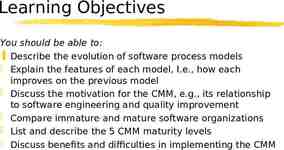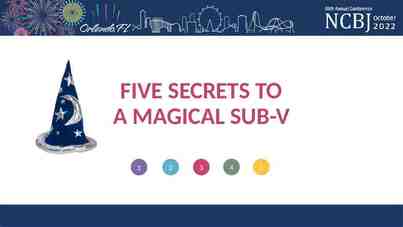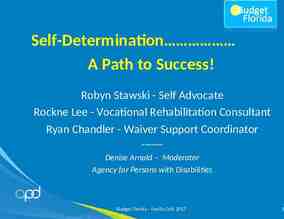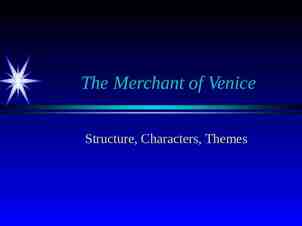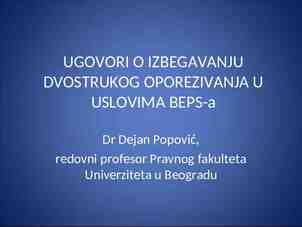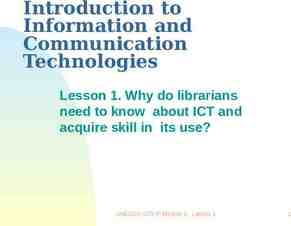OREGON ADULT COLLEGE AND CAREER READINESS STANDARDS (OACCRS)
54 Slides7.54 MB

OREGON ADULT COLLEGE AND CAREER READINESS STANDARDS (OACCRS) OACCRS ORIENTATION MODULE Mathematics and Language Arts Created September 2019

Overview WHAT are standards? WHY are we using learning standards? WHAT are the OACCRS? HOW were the OACCRS developed? HOW do the OACCRS align to the various GED tests and K-12 CCSS? WHERE can we find the OACCRS Handbooks? WHAT is in the OACCRS Handbooks? 2

Activating Prior Knowledge: What Do You Already Know?

Activating Prior Knowledge 1: At your institution, what standards guide the development of curricula, instruction, assessment, and program design? 4

Activating Prior Knowledge 2: Learning Standard: A statement of what learners should know and be able to do in a particular skill area; this statement reflects a shared vision of what is essential for all learners. Have you ever used a learning standard? What is the purpose of a learning standard? What are the benefits of a shared learning standard? What can happen when we don’t use a shared definition of learning standards? 5

Activating Prior Knowledge Which 3: statement best describes Oregon Learning Standards? A. Learning Standards define all the skills students will need to perform after successful completion of an instructional program. B. Learning Standards guide the development of curricula, instruction, assessment, and program design. C. Learning Standards provide an instructional sequence to follow precisely. D. Learning Standards dictate the types of lesson plans, activities, or teaching methods to be used in the 6

Oregon Adult College and Career Readiness Standards (OACCRS)

Do we have to use the OACCRS? All Oregon ABS programs that receive federal WIOA Title II funding are required to use learning standards. OACCRS are being adopted by all Oregon ABS programs as recommended by the Oregon Council of Adult Basic Skills Development and approved by CCWD. The goal is to have alignment across all ABS programs that are supported by WIOA Title II funding. CCWD has set accountability expectations related to using the OACCRS that are uniform for all Oregon community college and Department of Corrections Title II ABS programs. 8

What are the Oregon Adult College and Career Readiness Standards (OACCRS)? 9

Oregon’s Evolving Learning Standards In the beginning, there was the work of Equipped for the Future (EFF). EFF served as the basis for the development (begun in 2008) of Oregon’s first adult learning standards. 10

Oregon’s Evolving Learning InStandards 2016, to meet Workforce Innovation and Opportunity Act (WIOA) requirements, the Learning Standards were revamped and renamed Oregon Adult Learning Standards (OALS). OALS 11

Oregon’s Evolving Learning Standards In 2018, the CCRS served as the basis for reorganizing the structure of the OALS. Key parts of OALS were retained, and enhancements were added to fill identified gaps. OALS 12

The point is that if you already have some familiarity with any of the previous Oregon learning standards, you probably know a lot about the OACCRS! Can we all say, “Yes!”? 13

Why use the national CCR Standards? The Workforce Innovation and Opportunity Act (WIOA) of 2014 [Title 1] requires that state ABS standards align with K-12 academic standards. The CCRS align with the K-12 Common Core State Standards (CCSS). A wealth of online resources are available: Lesson plans, instructional materials & professional development opportunities The national CCR Standards provide a framework for helping both state and local partners coordinate services for reaching the Adult Attainment Goal in Oregon. The national CCR Standards also align with: 14

Why use the national CCR Standards? The CCRS serve as an organizer for meeting the many needs of adult learners across the nation. Goals and Expectations Outcomes and Measures Resources and Structures Pathways and Supports 15

How were the national CCR Standards developed? The Office of Career, Technical, and Adult Education (OCTAE) convened two review panels—one in math and one in English language arts/literacy (ELA/literacy)—with a wide cross-section of experience and expertise. Common Core State Standards (CCSS) served as the basis of discussions. Feedback was gathered from colleagues around the nation and the lead CCSS writers. An evidence-based process was established. 16

What questions guided the selection of content for the national CCR Standards? 1. Using evidence, what Common Core State Standards (CCSS) content in the area of ELA/literacy is RELEVANT to preparing adult students for success in higher education and training programs? 2. Using evidence, what CCSS content in the area of mathematics is RELEVANT to preparing adult students for success in higher education and training programs? 3. Using evidence, which standards in each content area are MOST IMPORTANT for adult students? 17

How are the CCRS aligned with CCSS? CCRS ELA/Literacy Level Common Core State Standards Grade Level CCRS Mathematics Level Common Core State Standards Grade Level A K-1 A K-1 B 2–3 B 2–3 C 4–5 C 4–first part of 6 D 6-8 D Last part of 6-8 E 9–12 E 9–12 18

Consider for a moment: How has the definition of “college and career ready” changed over the years? How will those changes impact how and what we teach our adult learners? 19

Because the definition of being “college and career ready” has changed over the years, both the CCR and CCS Standards introduce shifts in the content of what we teach and how we lead our instruction 20

Key Shifts/Advances in Content & Mathematics Instruction: Instruction Language Arts Instruction: 1. Focus: strengthening foundations by teaching the most important math topics fully and well; addressing “why” and not just “how” 2. Coherence: building new knowledge based on previous learning, making coherent progressions from level to level 3. Rigor: pursuing conceptual 1. Text Complexity: practicing regularly with complex text (and its academic language) 2. Evidence: grounding student reading and writing in evidence from the text 3. Building Knowledge: building knowledge through content-rich nonfiction 21

Mathematics: Key Shifts in Content and Instruction FOCUS deeply on only the concepts that are prioritized in the standards. Learners gain a greater mastery of fewer concepts, providing a firm foundation on which to build. If a topic is not in the standards, it may be taught if time allows or if there is a high level of need or interest. COHERENCE: Carefully connect the learning within and across levels so that students construct new understanding on foundations built in previous study. Mathematics is not a list of disconnected topics, tricks, or mnemonics--it is a coherent body of knowledge made up of interconnected 22

Mathematics: Key Shifts in Content and Instruction RIGOR has 3 components: Conceptual Understanding - make sense of concepts and operations, and connect new ideas and concepts to prior knowledge Procedural Skill and Fluency - apply procedures accurately, efficiently, and flexibly Application - learn in-context and solve problems in a relevant and meaningful way 23

Language Arts: Key Advances in Content and Instruction COMPLEX TEXT: Instructors create scaffolding and support in the curriculum for repeated and close readings of complex text Students build the transferable, academic vocabulary they need to access complex texts across a variety of subject areas Two tools help instructors understand text complexity, and can be used to determine that texts used are level-appropriate: Quantitative (Reading Standard 10) information is detailed in Reading Standard 10, and A Qualitative Analysis Rubric is provided in the OACCRS Language Arts Handbook on pages 53-54 24

Language Arts: Key Advances in Content and Instruction EVIDENCE: Students engage in rich and rigorous evidence-based conversations about text Writing emphasizes the use of evidence from reliable sources to inform or to make an argument KNOWLEDGE: Students build knowledge about the world through exploration of the text Students focus primarily on informational text 25

What do the OACCRS Handbooks include? History of Standards in Oregon Description of OACCR Standards Single-level views for each level, along with ideas of how to implement standards Cross-level matrices Lesson planning ideas Glossary of key terminology Links to resources 26

Overview of OACCRS Mathematics

OACCRS Mathematics Content Domains for CCRS: Part of Level D - Level Overview Domains for CCRS: Level A - Most of Level D (from CCSS K-8) The base 10 number system Place value Operations Number properties Ratios and proportions Algebraic thinking Expressions Operations Functions Geometry Measurement and data Statistics and probability E (from CCSS high school) The real number system Algebra Structure in expressions Polynomials and rational expressions Creating and reasoning with equations and inequalities Building and interpreting functions Linear, quadratic, and exponential models Geometry Similarity Congruence Modeling 28

Standards for Mathematical Practice The Mathematics Handbook specifies standards for practice working in tandem with the standards for mathematical content. The Standards for Mathematical Practice describe habits of mind that instructors at all levels should seek to develop in their students. These practices rest on important processes and

What do the OACCR Standards for Mathematics Content look like? This sample is part of page 37 in the Handbook. 30

Example of Math Standard (from RecognizeC) that in a multi-digit whole number, a digit in one place Level represents ten times what it represents in the place to its right. For example, recognize that 700 70 10 by applying concepts of place value and division. (4.NBT.1) The coding (4.NBT.1) indicates that this standard is from CCSS Grade 4, the Number Base Ten strand, and that it is the first standard at that 31

Overview of OACCRS Language Arts

OACCRS Language Arts Content Overview Reading Language Key Ideas & Details Craft & Structure Integration of Knowledge & Ideas Range of Reading & Level of Text Complexity Writing Text Types & Purposes Production & Distribution of Writing Research to Build & Present Knowledge Conventions of Standard English Knowledge of Language Vocabulary Acquisition & Use Reading Foundational Skills Print Concepts Phonemic Awareness Phonics & Word Recognition Fluency 33

Reading Process Skills Adult learners read diverse texts to build knowledge for a variety of purposes, integrating their knowledge, skills, and strategies in the following process: Determine the reading purpose Select and use reading strategies appropriate to the purpose Monitor comprehension and adjust reading strategies as needed to deepen understanding of text Use textual evidence to analyze the content and reflect on the underlying meanings Integrate the content with prior knowledge to address the reading purpose 34

Sample CCR Reading Anchor Standard Descriptors cite the CCSS standard upon which they are based. Meanings of CCSS abbreviations can be found in the handbook glossary. 35

Writing Process Skills Adult learners write to express meaning for a variety of purposes, integrating their knowledge, skills, and strategies in the following components of the writing process: Determine the purpose for writing Select and use writing strategies appropriate to the purpose Develop and organize ideas using evidence to serve the writing purpose Use self-review and feedback from others to revise text Use English language conventions and edit text to increase reader understanding and meet the writing purpose 36

Sample CCR Writing Anchor Standards The underlining is used to indicate a change in the description from level to level. 37

What the OACCR Standards ARE and ARE NOT The OACCRS ARE NOT a scope and sequence a packaged curriculum directions for how to teach The OACCRS ARE descriptions of what students will KNOW descriptions of what students will be able to DO guidelines to help inform curriculum, instruction, assessment, and program design 38

Oregon Adult College and Career Readiness Standards and the GED

GED Reasoning Through Language Arts Test The GED assessment targets for reading, writing, and language align with the following CCR anchor standards: Reading CCR anchor standards 1, 5, 6, 8, and 10 Language CCR anchor standards 1, 2, and 4 Writing CCR anchor standards 1, 6, and 9 40

GED Social Studies Test The GED assessment targets for Social Studies align with the following CCR anchor standards: Reading CCR anchor standards 1, 2, 3, 4, 6, 7, 8, and 9 CCR mathematics standards for data (in Data and Measurement) and statistics (in Statistics and Probability) 41

GED Mathematical Reasoning Test The content of the GED Mathematical Reasoning test reflects the focus of the OACCRS on building algebraic thinking (about 55% of both the test and the standards) and quantitative problem solving (the remaining 45%). The test not only reflects the OACCRS in math content, but also focuses on math practices. This means that students must reason about math and comprehend the logic of mathematical procedures. A key element tested on the GED reflects a major building block for the OACCRS for Mathematics: that learners must apply math concepts to real-world problems. 42

GED Mathematical Reasoning Test Part of the mathematics portion of the GED assesses very specific skills (content standards in OACCRS) and abilities. Example: Find the mean this set of data: 88, 27, 93, 114, 68 Other parts of the Mathematical Reasoning Test assess students’ use of the mathematical practices in OACCRS, focusing on mathematical reasoning skills and modes of thinking mathematically. Example: Here is a set of data that has one value missing: 7, 2, , 15, 20, 8, 14, 29 If the mean of the data is 13, what is the missing number? 43

GED Science Test The GED Science test focuses on literacy in science, referencing the CCR standards. It also draws from the Next Generation Science Standards for content areas. Similar to Social studies and Math, the GED Science test identifies science practices that align with the following CCR anchor standards: Reading CCR anchor standards 1, 3, 7 Writing CCR anchor standard 9 Math: analyzing and interpreting data(particularly reading and interpreting graphs and measure of central tendency), using mathematics and computational thinking in scientific applications (especially understanding and applying variables and equations) 44

Show What You Know

Show What You Know (1 of 4) The acronym “OACCRS” stands for: A. Oregon Adult Common Core Readiness Standards B. Ostriches Always Consume Cool Raspberry Shakes C. Outstanding Advocates Ceremoniously Cite Reasonable Statements D. Oregon Adult College and Career Readiness Standards 46

Show What You Know (2 of 4) of these is NOT a purpose served by learning Which standards? A. To help prepare students for success in higher levels of education and employment B. To lull brilliant adult educators into a deep state of languor C. To provide a common language for educators and other stakeholders D. To help measure student progress and drive program improvement E. To help determine the focus and sequence of curriculum and 47

Show What You Know (3 of 4) Which statement best completes the sentence? Job markets and college requirements change significantly over time, A. but there is no need to update what is expected of students in adult learning programs. B. so adult learning standards need periodic updating to reflect evolving expectations. C. yet stakeholders in adult education programs have no reason to care about college and career readiness as long as students pass the GED . 48

Show What You Know (4 Which of 4)of the following statements is correct? A. Individual instructors and other staff do not need to be concerned with using the OACCRS since the Standards mostly have to do with administrative procedures. B. The OACCRS allow no flexibility about what or how Oregon’s most excellent adult educators teach. C. Oregon ABS programs that receive federal WIOA Title II funding are required to use learning standards, and CCWD has set up program accountability expectations. D. Materials supporting the OACCRS are as scarce as hen’s teeth. 49

What’s Next?

Explore the Handbooks Take some time to explore the OACCRS Handbook s with links to https://www.oregon.gov resources: /highered/institutions-p rograms/ccwd/Pages/ab s-resources.aspx 51

Additional Resources CCRS - https:// lincs.ed.gov/publications/pdf/CCRStandardsAdultEd.pdf EFF - https://eff.clee.utk.edu GED crosswalk with CCR standards - https:// www.arcareereducation.org/docs/default-source/adult-education/e ducational-standards/crosswalk-ged-alignment.pdf?sfvrsn b12241 16 2 College & Career Readiness & Success Center (American Institutes for Research) - https:// ccrscenter.org/products-resources 52

QUESTIONS OR COMMENTS? Contact: Helen Dunford Adult Basic Education State Leadership Coordinator Oregon Higher Education Coordinating Commission Email: [email protected] 53

Other Questions? End of OACCRS Training Module 1 54

